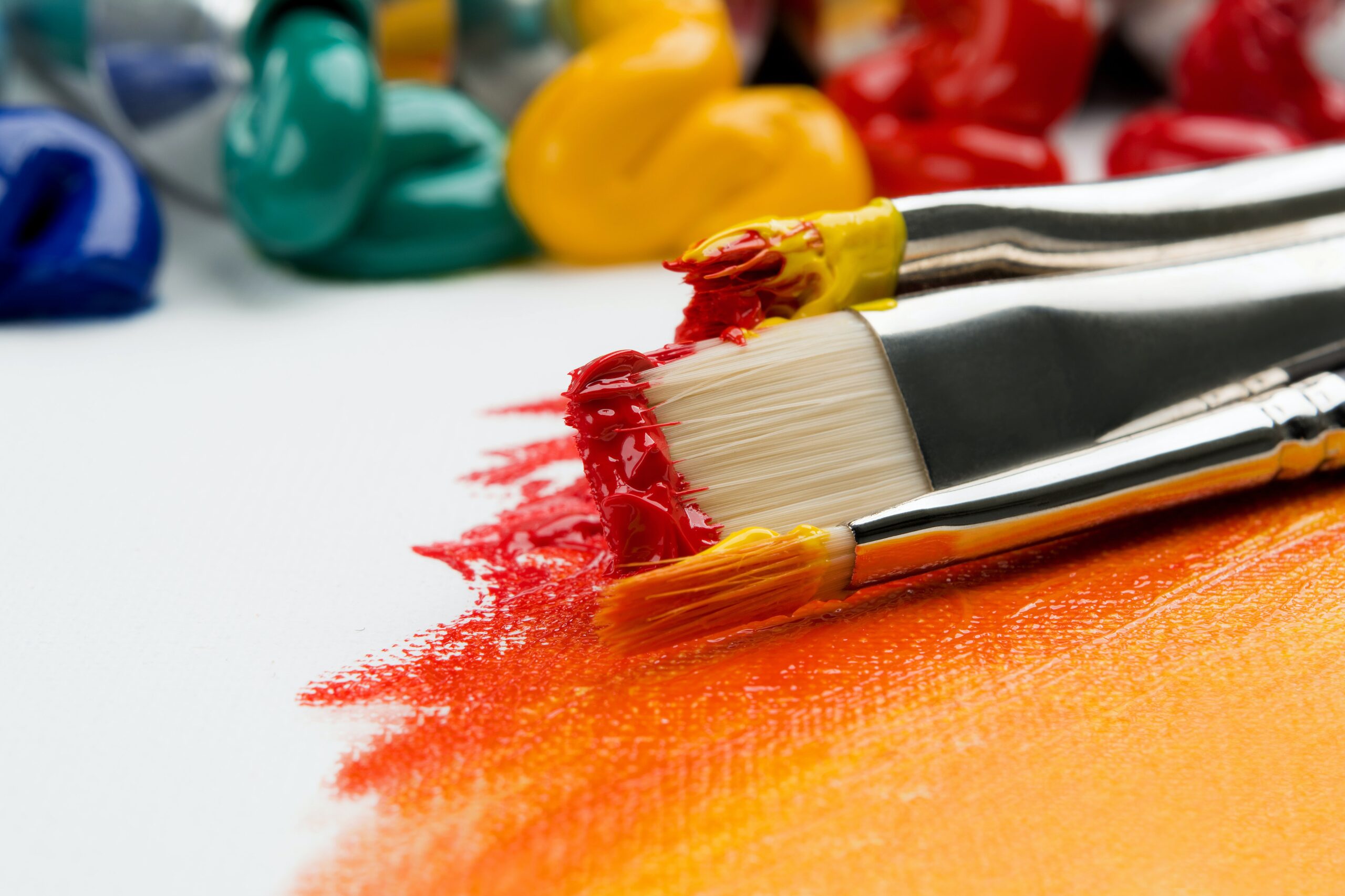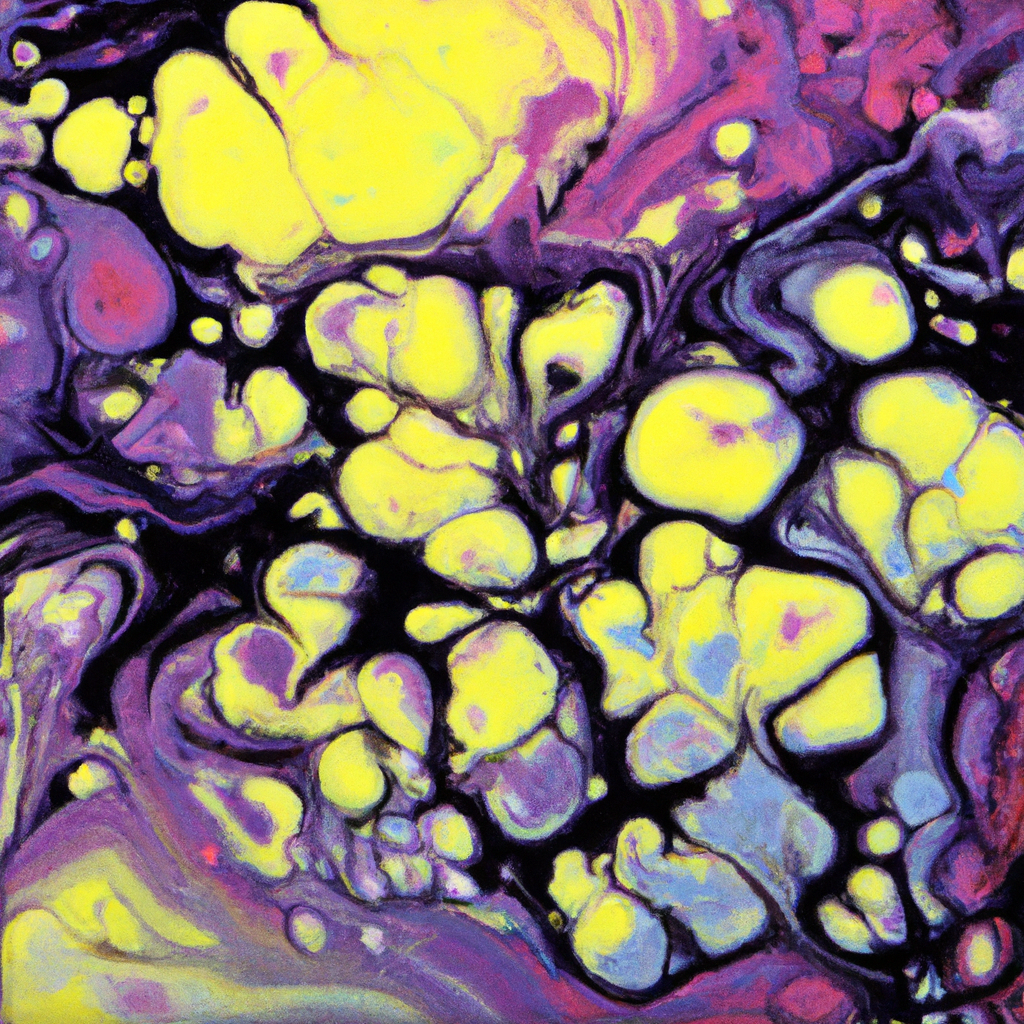In this article, you will discover the essential tools to effectively clean your acrylic paint brushes. Keeping your brushes in good condition is crucial for maintaining their longevity and ensuring optimal performance. By using the right cleaning materials, you can easily remove dried paint and restore your brushes to their pristine state, ready for your next artistic endeavor. From simple household items to specialized brush cleaners, we will explore various options that are easily accessible and effective. Say goodbye to stubborn paint remnants and say hello to beautifully clean acrylic paint brushes.
Introduction
Cleaning acrylic paint brushes is an essential part of maintaining their performance and prolonging their lifespan. Whether you are an experienced artist or a beginner, proper brush care is crucial for achieving quality results and saving money in the long run. In this article, we will explore the importance of cleaning brushes, the effects of not doing so, and the materials and tools needed for the cleaning process. We will also provide a step-by-step guide on how to clean acrylic paint brushes effectively. So grab your brushes and let’s dive into the world of brush care!
Why Clean Acrylic Paint Brushes
Importance of Cleaning Brushes
Regularly cleaning your acrylic paint brushes is vital for maintaining their performance. Over time, paint residue can build up on the bristles, causing them to become stiff and less flexible. This can negatively impact the brush’s ability to hold and distribute paint, resulting in uneven application and less precise strokes. By cleaning your brushes after each painting session, you ensure that they stay in optimal condition, delivering consistent and professional-looking results.
Effects of Not Cleaning Brushes
Neglecting to clean your acrylic paint brushes can have several adverse effects. Firstly, dried paint residue can accumulate on the bristles, making it difficult to paint smoothly and evenly. This can lead to frustration and dissatisfaction with your artwork. Additionally, when paint is left to dry on the bristles, it can eventually harden and cause irreversible damage to the brush hairs. This can result in permanent bristle splaying, fraying, or even breakage, rendering the brush useless. By neglecting to clean your brushes, you not only compromise the quality of your artwork but also waste money by having to replace damaged brushes.

Materials and Tools Needed
To effectively clean your acrylic paint brushes, you will need the following materials and tools:
1. Cleaning Container
A cleaning container is essential for holding the cleaning solution and facilitating the brush cleaning process. It can be a cup, jar, or any container that is wide and deep enough to submerge the brushes.
2. Running Water
Having access to running water is crucial for rinsing the brushes thoroughly and removing any residual paint or cleaning solution.
3. Mild Dish Soap
Mild dish soap is an excellent option for cleaning acrylic paint brushes. It effectively breaks down the paint particles and is gentle on the bristles. Look for dish soaps that are free from harsh chemicals and fragrances.
4. Paintbrush Cleaner or Conditioner
A specialized paintbrush cleaner or conditioner can be used to remove stubborn paint residues and condition the bristles, keeping them soft and flexible. These products are formulated specifically for brushes and can help extend their lifespan.
5. White Vinegar
White vinegar is a natural cleaning agent that can be used to remove dried paint from brushes. It is particularly effective for removing varnish or adhesive residues that are difficult to clean with soap alone.
6. Rubbing Alcohol
Rubbing alcohol is another useful tool for cleaning acrylic paint brushes. It can dissolve dried paint and remove stubborn stains. However, it should be used sparingly as it can be harsh on the bristles and may cause damage if used excessively.
7. Palette or Palette Pad
A palette or palette pad is essential for mixing and diluting acrylic paint. It provides a convenient surface for cleaning brushes during painting sessions and aids in removing excess paint from the bristles before cleaning.
8. Paper Towels
Paper towels are useful for wiping excess paint and cleaning solution from the brushes. They are absorbent and disposable, making them ideal for the cleaning process.
9. Soft Brush or Cleaning Pad
A soft brush or cleaning pad can be used to agitate the bristles gently and remove paint residues. Make sure to choose a brush or pad with soft bristles to avoid damaging the delicate bristles of your acrylic paint brushes.
10. Gloves
Wearing gloves during the brush cleaning process can protect your hands from the paint, cleaning solutions, and any potential irritants. Disposable gloves made of latex or nitrile are readily available and provide a barrier between your skin and potentially harmful substances.
Now that we have gathered all the necessary materials and tools let’s proceed to the step-by-step cleaning process.
Step-by-Step Cleaning Process
Preparation
Before diving into the cleaning process, it’s essential to prepare your brushes and gather all the necessary materials. Follow these steps for effective preparation:
-
Gather Necessary Materials: Collect all the materials and tools mentioned above, ensuring you have everything within arm’s reach.
-
Prepare the Cleaning Container: Fill the cleaning container with warm water, ensuring it is deep enough to submerge the bristles of your brushes fully.
-
Wet the Brushes: Thoroughly wet the bristles of each brush under running water. This step helps remove any excess paint and pre-soaks the bristles, making the cleaning process more effective.
Cleaning
Once the preparation is complete, you can proceed with the cleaning process. Choose one of the following methods to clean your acrylic paint brushes:
-
Using Mild Dish Soap: Apply a small amount of mild dish soap to the bristles of each brush. Gently massage the soap into the bristles using your fingers or a soft brush. Work the soap through the bristles from the ferrule (the metal part) towards the tip, ensuring all the bristles are thoroughly coated. Rinse the brushes under running water, gently squeezing the bristles to remove the soap and paint residues.
-
Using Paintbrush Cleaner or Conditioner: Follow the instructions provided with your chosen paintbrush cleaner or conditioner. Apply a small amount of the cleaner or conditioner to the bristles, working it into a lather using your fingers or a soft brush. Rinse the brushes under running water, ensuring all the cleaning product and paint residues are thoroughly removed.
-
Using White Vinegar: Pour a small amount of white vinegar into a clean container. Submerge the bristles of your brushes in the vinegar and let them soak for a few minutes. Gently agitate the bristles using your fingers or a soft brush to remove any remaining paint. Rinse the brushes under running water, ensuring all the vinegar and paint residues are thoroughly removed.
-
Using Rubbing Alcohol: Dampen a clean towel or paper towel with rubbing alcohol. Gently rub the bristles of each brush against the towel, using circular motions to loosen and remove dried paint. Rinse the brushes under running water, ensuring all the rubbing alcohol and paint residues are thoroughly removed.
Rinsing
After cleaning the brushes, it is essential to rinse them thoroughly to remove any remaining soap, cleaner, or paint residues. Follow one of these methods for effective rinsing:
-
Rinsing Under Running Water: Hold each brush under running water, gently squeezing the bristles and ensuring that water flows through them. Continue rinsing until the water runs clear, indicating that all the cleaning solution and paint residues have been removed.
-
Using a Cleaning Container: Pour clean water into the cleaning container. Submerge the bristles of your brushes in the water and agitate them gently to remove any remaining soap or paint residues. Repeat this process with fresh water until the water remains clear, ensuring a thorough rinse.

Drying and Conditioning
Once the brushes are properly rinsed, it’s time to dry and condition them to maintain their shape and integrity. Follow these steps for effective drying and conditioning:
-
Removing Excess Water: Gently squeeze the bristles of each brush using your fingers or a clean towel to remove excess water. Be careful not to twist or pull the bristles as this can cause damage.
-
Reshaping the Brushes: While the bristles are still damp, reshape them to their original form using your fingers. Smooth out any kinks or splaying, ensuring the bristles are aligned.
-
Air Drying: Place the brushes flat or hang them upside down in a well-ventilated area to dry naturally. Avoid drying them upright as water can collect around the metal ferrule, potentially causing mold or mildew.
-
Using a Brush Conditioner: Once the brushes are fully dry, you can condition them further by applying a small amount of brush conditioner. This helps keep the bristles soft and supple, preventing them from becoming dry and brittle.
Additional Tips
To enhance your brush cleaning experience and maintain their longevity, consider the following tips:
Cleaning Brushes Immediately
Try to clean your acrylic paint brushes immediately after each painting session. By doing so, you prevent paint from drying on the bristles, making the cleaning process easier and more effective. Prompt cleaning also minimizes the risk of permanent damage to the bristles.
Avoiding Harsh Chemicals
While some stubborn stains may require the use of stronger cleaning agents, it’s essential to use them sparingly. Harsh chemicals can degrade the bristles over time, causing them to lose their shape, become brittle, or even break. Whenever possible, opt for milder cleaning solutions and gentler cleaning methods to preserve the longevity of your brushes.
Using Protective Gloves
Wearing gloves during the brush cleaning process is recommended to protect your hands from potentially harmful substances. Acrylic paints and cleaning solutions can contain chemicals that may cause skin irritation or allergic reactions. By wearing gloves, you minimize direct contact, ensuring your hands stay clean and protected.
Proper Storage
Properly storing your clean acrylic paint brushes is essential for maintaining their shape and preventing damage. Avoid storing them upright with the bristles facing upward, as this can cause water to accumulate near the ferrule, potentially leading to mold or mildew. Instead, store your brushes flat or hang them upside down in a brush holder or a dedicated brush storage container.

Conclusion
Cleaning acrylic paint brushes is an important part of any artist’s routine. By investing a little time and effort into proper brush care, you can ensure that your brushes remain in optimal condition, delivering consistent and professional results. Remember to gather the necessary materials, follow the step-by-step cleaning process, and incorporate additional tips for a thorough and effective cleaning experience. With regular cleaning and proper care, your acrylic paint brushes will serve you well for years to come, allowing you to unleash your creativity without any limitations. Happy painting!



